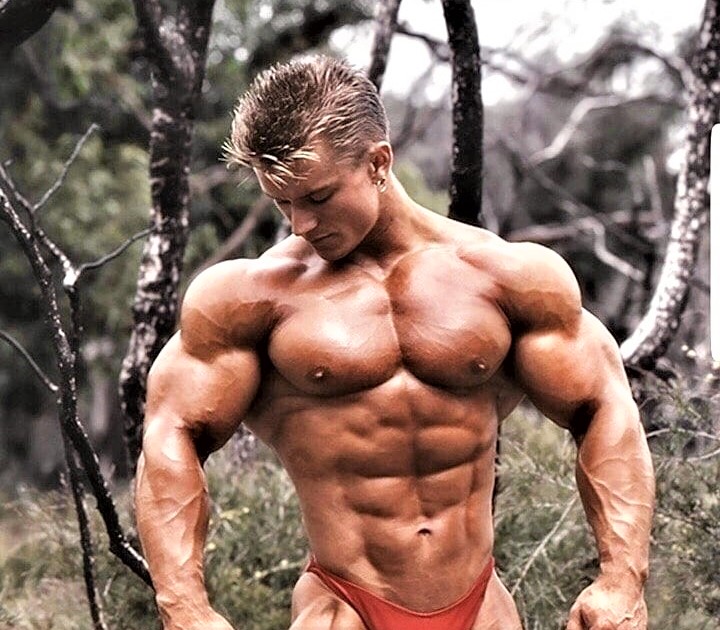Lee Priest was a true bodybuilding phenom. He dominated Australian amateur bodybuilding as a teenager before moving to Southern California. Then, in 1993, he made his pro bodybuilding debut at 20 and started racking up high placings against goliaths who were many inches taller and many pounds heavier than the 5’4″ and 200-lb. Priest. In 1997, at 25, Priest made his Mr. Olympia debut and, against a stacked lineup, placed sixth (ahead of Ronnie Coleman, who won his first of eight Mr. Olympia titles the next year). Priest was a giant killer. Last year, 4-time Mr. Olympia Jay Cutler said: “Nobody can ever blow your mind like Lee Priest looked at twenty-one years old.”
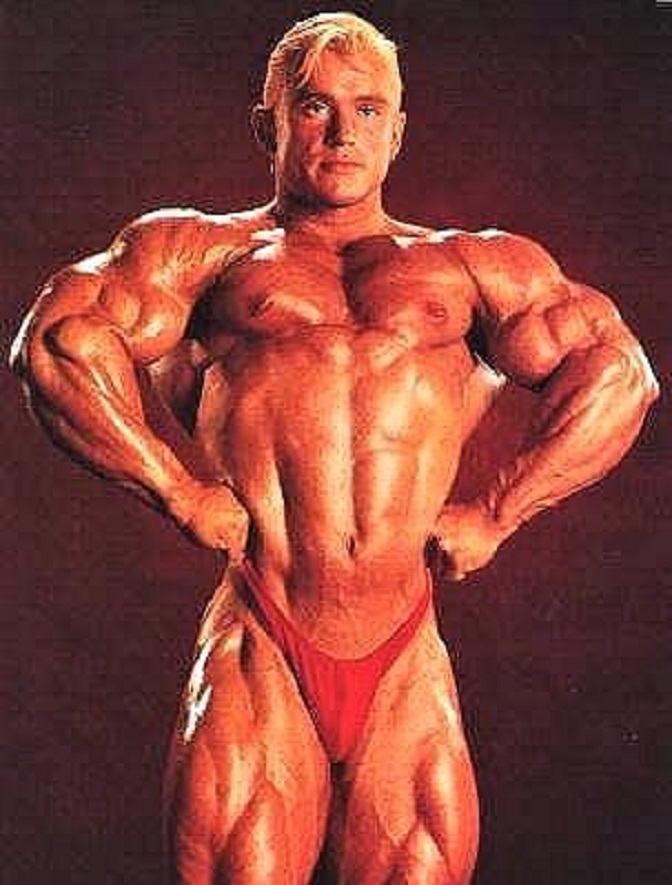
In 2003, I interviewed Lee Priest for FLEX magazine. He had by then placed sixth in two additional Mr. Olympias and won his first pro show. I asked him asked him about his teenage years when he transformed his body so dramatically and about his advice for young bodybuilders. This is that interview, including his full early 1990s workout, the one young Lee Priest used when he made his greatest gains.
Were you always a Superman fan?
Pretty much. Every year, my mother would make me a new suit and a cape for the dog, and I always had Superman stuff. I wasn’t so much into the comic books, but I remember getting up at 5 AM before school to watch the old black-and-white George Reeves TV show. I was always interested in strength. When I was 10 or 11, before I even started bodybuilding, I’d have my sister sit in the care in the driveway and take the brake off and I’d push it one way and then the other. We used to go to this place where the river emptied out into the beach and I’d put her in a raft and tie a rope to her and I’d run against the current, pulling her back and forth.
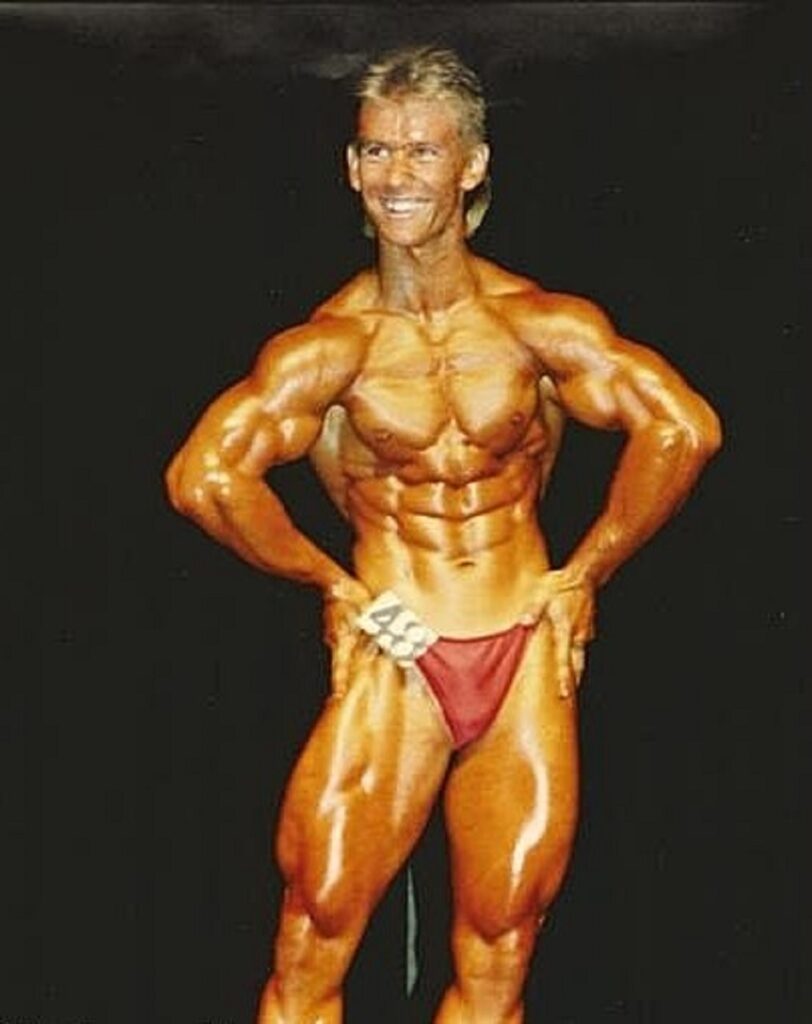
What were you like before you started weight-training?
I was a normal skinny twerp. I had lean muscle, but because I started so young [at age 13], as I got older and the hormones kicked in, I always progressed. At 13, I weighed about 120, and when I moved to California at 20, I was over 200 pounds. I was about 186 in my first pro contest [1993 Niagara Pro Invitational], so I gained more than 70 pounds of muscle in my teenage years.
What was your training like as a teenager?
Pretty much the way it is now. The only difference was I did lifts like bench presses and presses-behind-the-neck that I later decided didn’t work for my body. I believe in the old Arnold style of high-volume basic exercises and heavy weights with six to eight reps. I did at least 20 sets per bodypart, sometimes 30 or more, and that’s not counting warmups. I go by how I feel. I’ve always been a very instinctive trainer. I never had a set routine in mind before I started a workout. I always make it up as I go, depending on how I feel and what equipment is available.
What kid of training split were you using?
I never really stuck to one split. Most often, I’d go four-on and one-off, but sometimes I’d train for two weeks straight if I felt strong and wasn’t tired. I’m still that way. Sometimes I’ll train biceps and triceps on one day. Other times, I’ll do bi’s one day and tri’s on another. I mix and match as I go along. Sometimes it might be a chest day, but if I don’t feel like training chest, I’ll do shoulders.
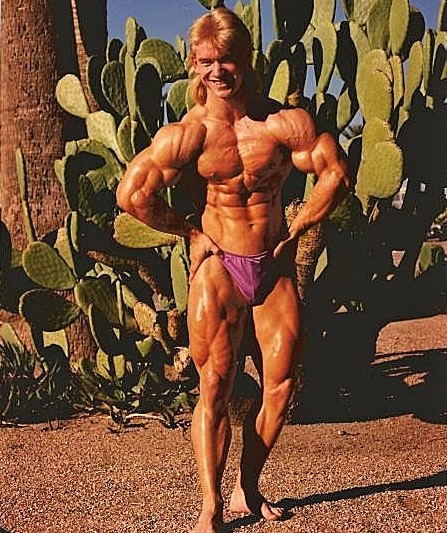
Which intensity techniques did you use?
I liked forced reps. I’ve always had a training partner and that person would help me with the last one or two reps, just enough to keep the weight moving. I did supersets or giant sets occasionally, just when I got a silly idea to try something different. I often did them when I didn’t feel like going heavy, but I usually ended up going heavy anyway. It seems I just can’t escape going heavy, damn it. That’s the only way I know how to train.
Did you push most sets to failure?
Yep, every set. If I don’t get to failure when I get to eight reps, then I don’t count that set. I’ll increase the weight and do the set again.
How did you settle on six to eight reps?
I tried more, but I never really liked it. I’d rather increase the weight than the reps. Say I was doing dumbbell presses and I was using 140-pounders and I got to 10 pretty easily. I’d think it was a wasted set and I should’ve grabbed the 150- or 160-pound dumbbells. I just prefer to use the heavier weights all the way through.
What sort of equipment did you use?
In Australia then, we just had free weights and the basic machines, things like the leg-curl and lat-pulldown. We didn’t have any of the fancier machines like Hammer Strength, because it was too expensive to import them down there. I’ve always felt the basic movements are best anyway. These days, guys depend too much on machines. You see a lot of good physiques, but they lack that dense muscle that the guys had in earlier days.
If you have a choice between barbell rows and machine rows where you just have to change the pin, people go for the easier one, but you can’t make it easy on your muscles if you want to grow. You can get a good workout with machines, but it’s not the same because you’re not using stabilizing muscles. When you squat, for example, you’re putting your whole body into the movement to balance the bar and that brings out muscle quality you just can’t get from machines.
What would you recommend to an average bodybuilder who wants to gain size?
Stick to the basics. You can use machines to warmup or finish off a muscle, but the free-weight basics should form the core of your program. Use trial and error. Some exercises might not work as well for you. Sometimes it takes a long time to figure out the training and diet that works best for you. Everybody is different.
You also need to focus on your whole lifestyle. Bodybuilding isn’t just 90 minutes in the gym; it’s a way of life. I know a lot of guys who train hard, but their eating isn’t good or they go out and party and drink until four in the morning. Then I hear them say they might be training too much. No, they’re just not getting enough sleep and good food. Bout are crucial if you want to build muscle.
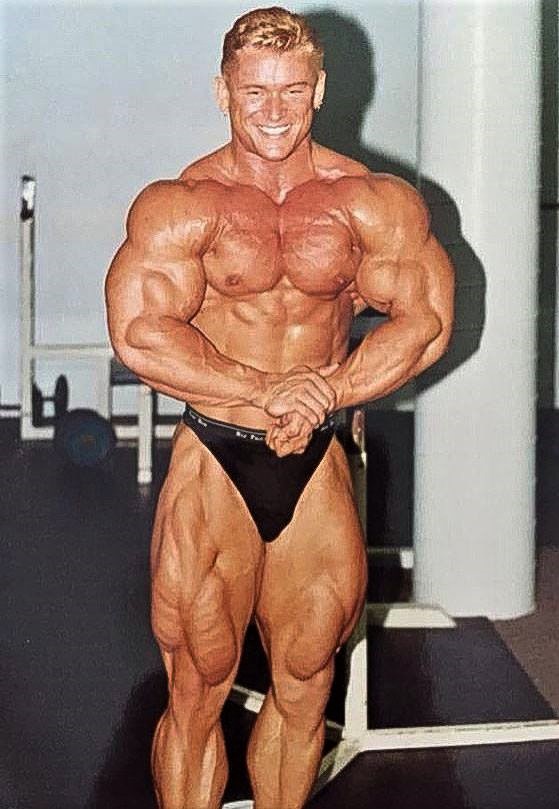
Do you advocate high-volume training?
It works for me, but it doesn’t only work for me; it’s always worked for my training partners. I think a lot of people don’t train enough. I don’t know if they’re lazy or they just don’t want to spend as much time in the gym, but they do 45 minutes and they’re gone. I guess it’s just the way society is today. You can buy premade meals, stir them and go. Everything is done so quickly. I guess people want bodybuilding to be the same way.
You were notorious for gaining a lot of weight in the offseasons. Do you recommend high-volume eating as well?
If you’re going to gain size, you have to gain some bodyfat. When I was trying to gain size, I’d drink a liter of full-cream milk and eat a whole chicken and a half a loaf of bread for a meal. I was eating pretty much like they did back in Arnold’s day. To this day, I stick to the basics—steak, potatoes, chicken, pasta, dairy products—stuff like that and occasional junk food. I do the old bulk-up and diet phases, more calories to gain mass, less calories to lose fat and, of course, cardio when I’m dieting. I’ve never made this bodybuilding thing very scientific. The more scientific you make it, the greater the chance for screwing up. If you stick to the basics, you can’t go wrong.
Do you have any specific advice for younger trainers?
It’s crazy that when I was 17, people used to say “You need more thickness here and there,” and I’d say, “Hey, I’m only 17.” It takes time to grow into the physique you were meant to have. Guys go into the gym these days and they want to be huge right away. When it doesn’t happen, they resort to drugs and whatever they can to get there. They don’t understand that it takes years to grow a lot of muscle. Just take it slow, and don’t get crazy with it and the size will come.
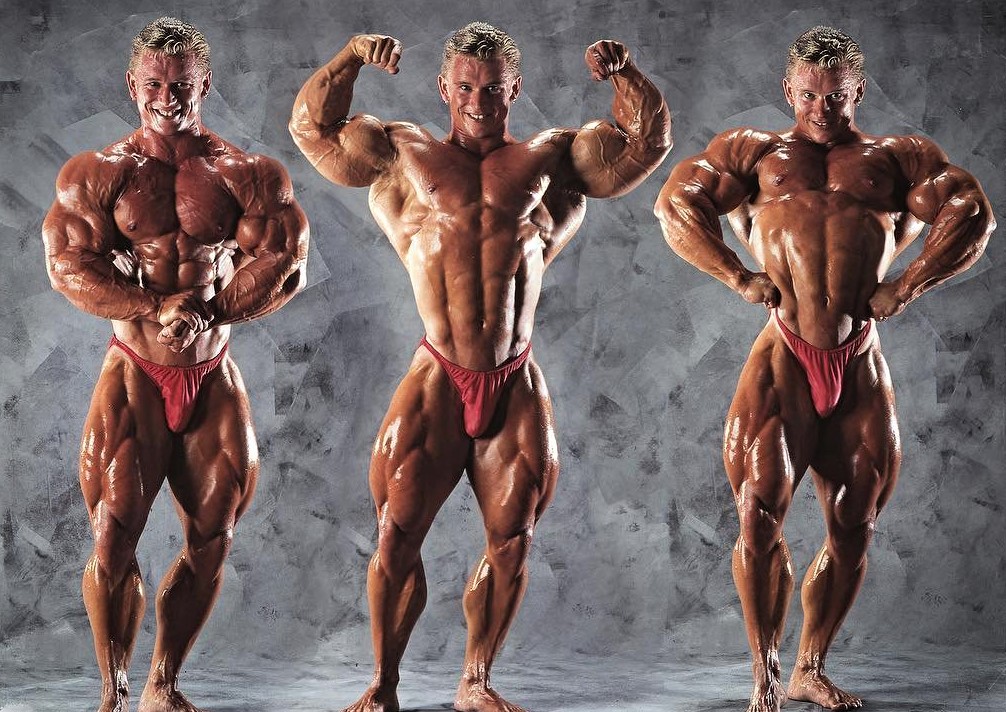
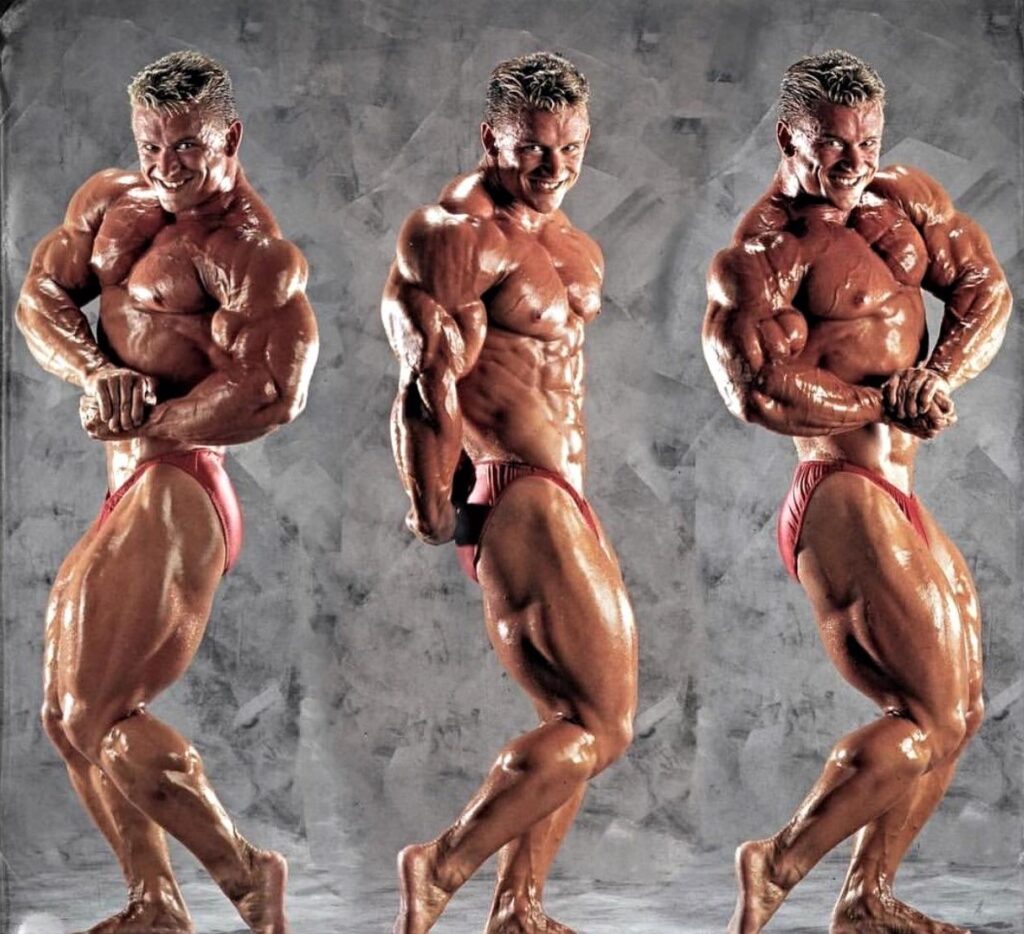
LEE PRIEST’S TEENAGE TRAINING ROUTINE
DAY 1: Legs
Leg Extensions — 5 x 8-10 reps
Squats — 5 x 6-8 reps
Leg Presses — 5 x 6-8 reps
Lunges — 5 x 6-8 reps
Leg Curls — 5 x 6-8 reps
Stiff-leg Deadlifts — 5 x 6-8 reps
DAY 2: Back
Pullups — 5 x 6-8 reps
Barbell Rows — 5 x 6-8 reps
Dumbbell Rows — 5 x 6-8 reps
Low-Cable Rows — 5 x 6-8 reps
Pulldowns — 5 x 6-8 reps
DAY 3: Shoulders, Biceps
Military Presses — 5 x 6-8 reps
Dumbbell Side Laterals — 5 x 6-8 reps
Dumbbell Front Raises — 5 x 6-8 reps
Bent-over Rear Laterals — 5 x 6-8 reps
Barbell Curls — 5 x 6-8 reps
Seated Alternate Dumbbell Curls — 5 x 6-8 reps
Preacher Curls — 5 x 6-8 reps
Cable Curls — 5 x 6-8 reps
DAY 4: Chest, Triceps
Bench Presses — 5 x 6-8 reps
Incline Dumbbell Presses — 5 x 6-8 reps
Dumbbell Flyes — 5 x 6-8 reps
Incline Flyes — 5 x 6-8 reps
Pushdowns — 5 x 6-8 reps
Dumbbell Triceps Extensions — 5 x 6-8 reps
Bench Dips — 5 x 6-8 reps
Overhead EZ-bar Triceps Extensions — 5 x 6-8 reps
Calves were trained every training day with one exercise for 4-5 sets of 50-100 reps. Abs were trained occasionally with leg raises and crunches.
For how young Jay Cutler got big, check out: How Jay Cutler Grew Big: Interview, Full Workout & Diet



































